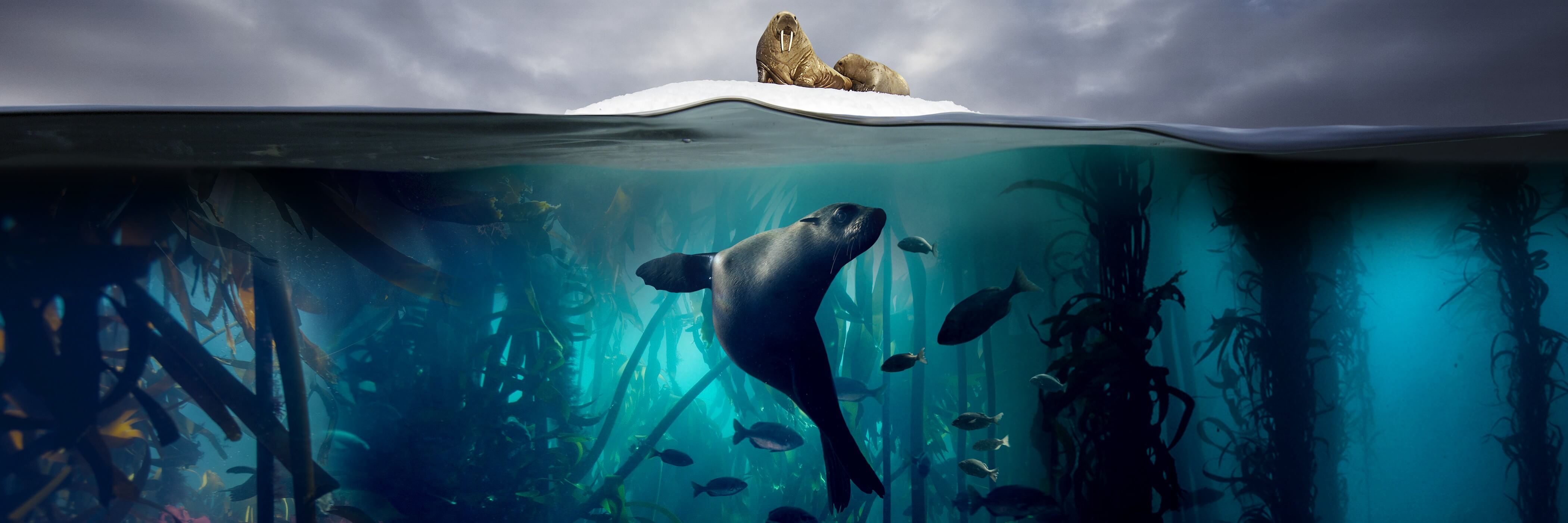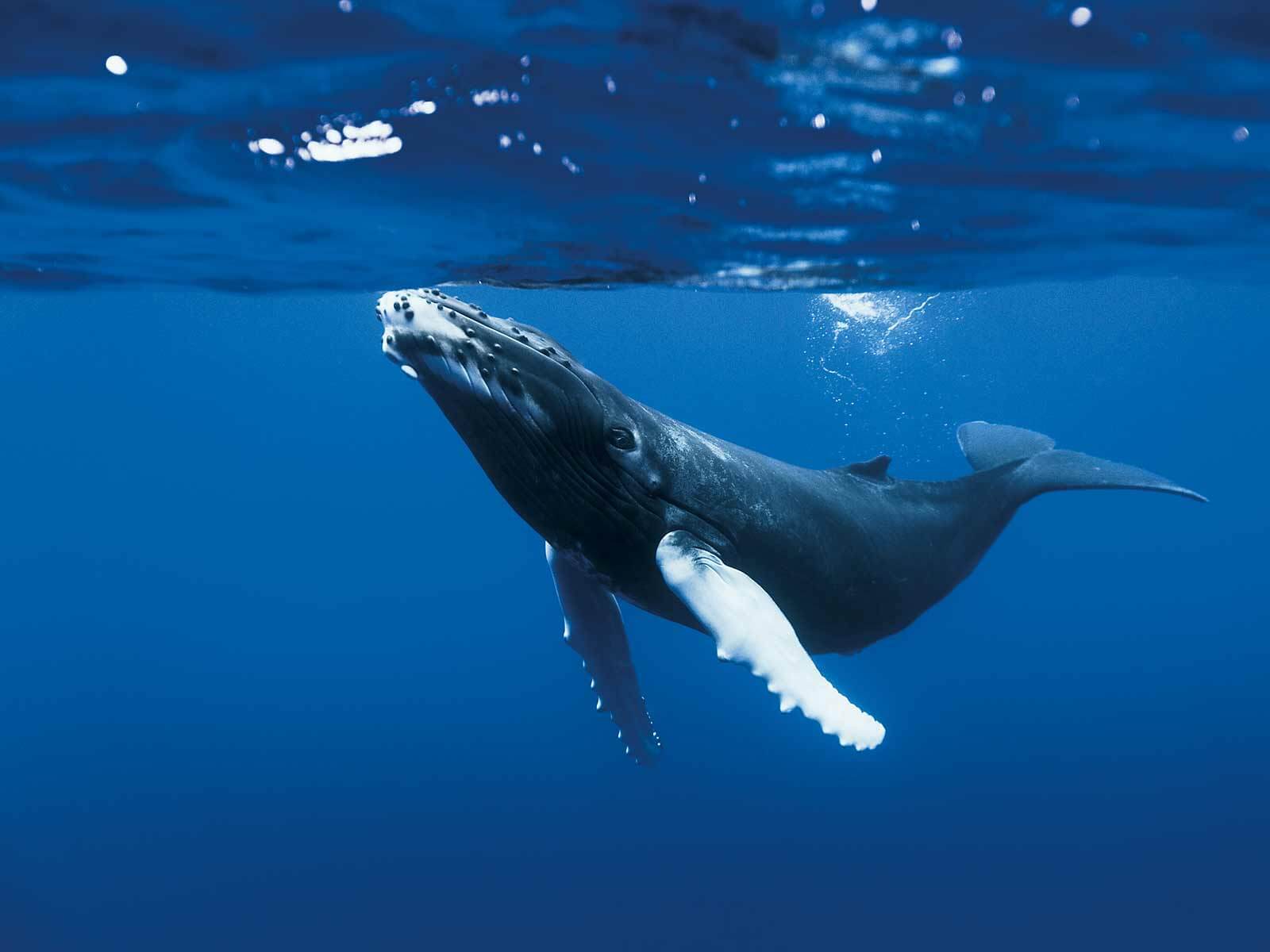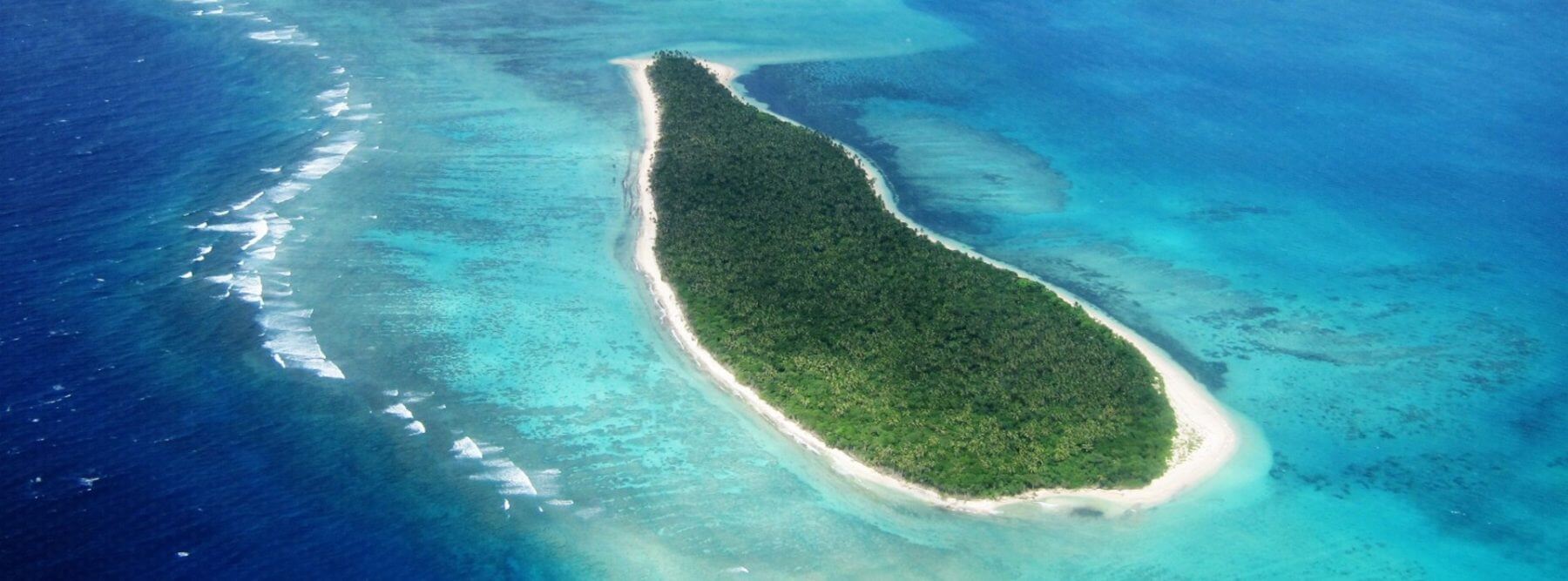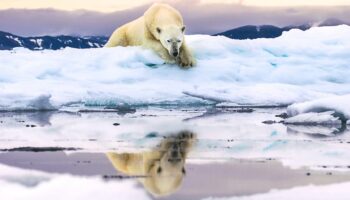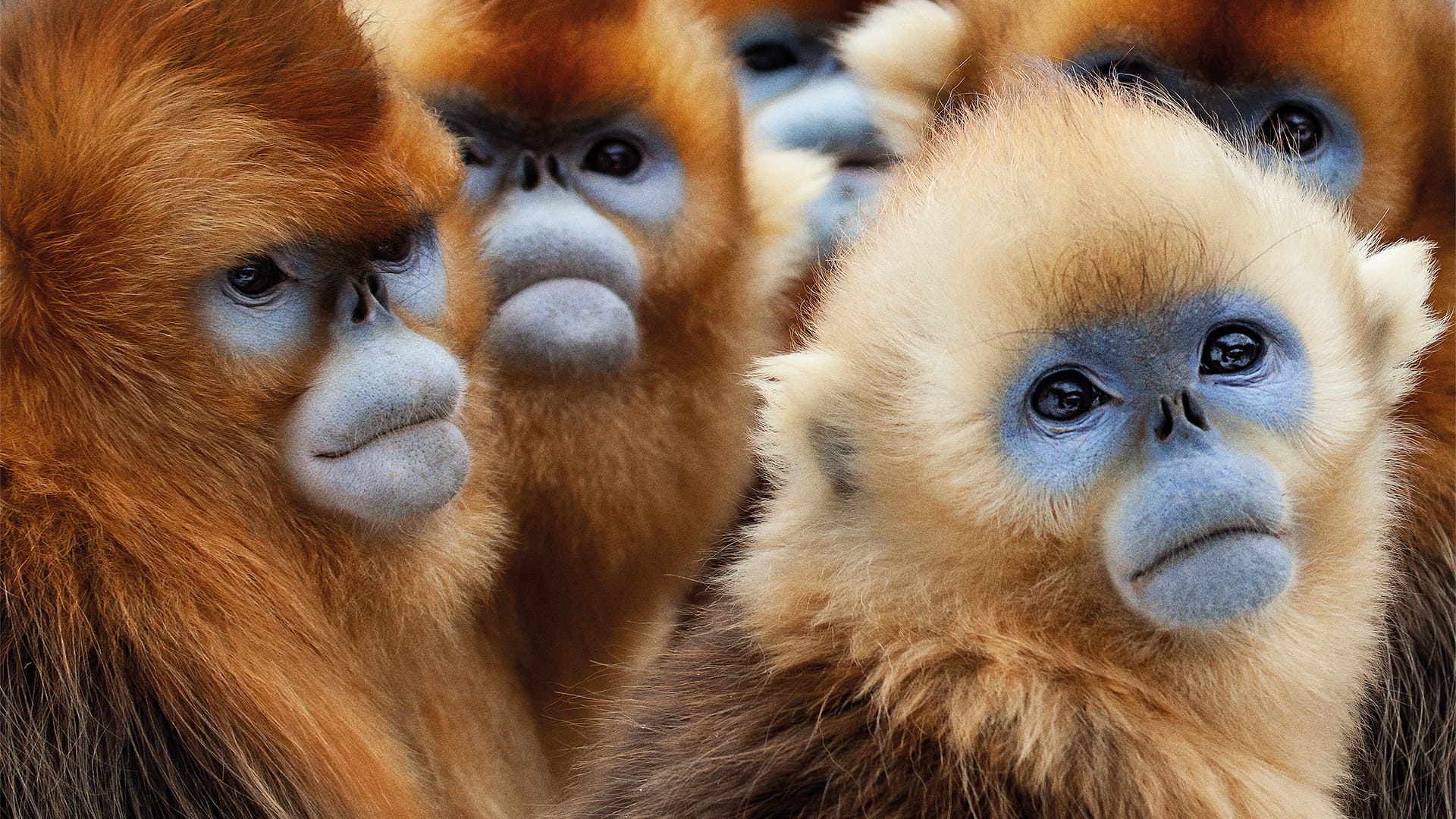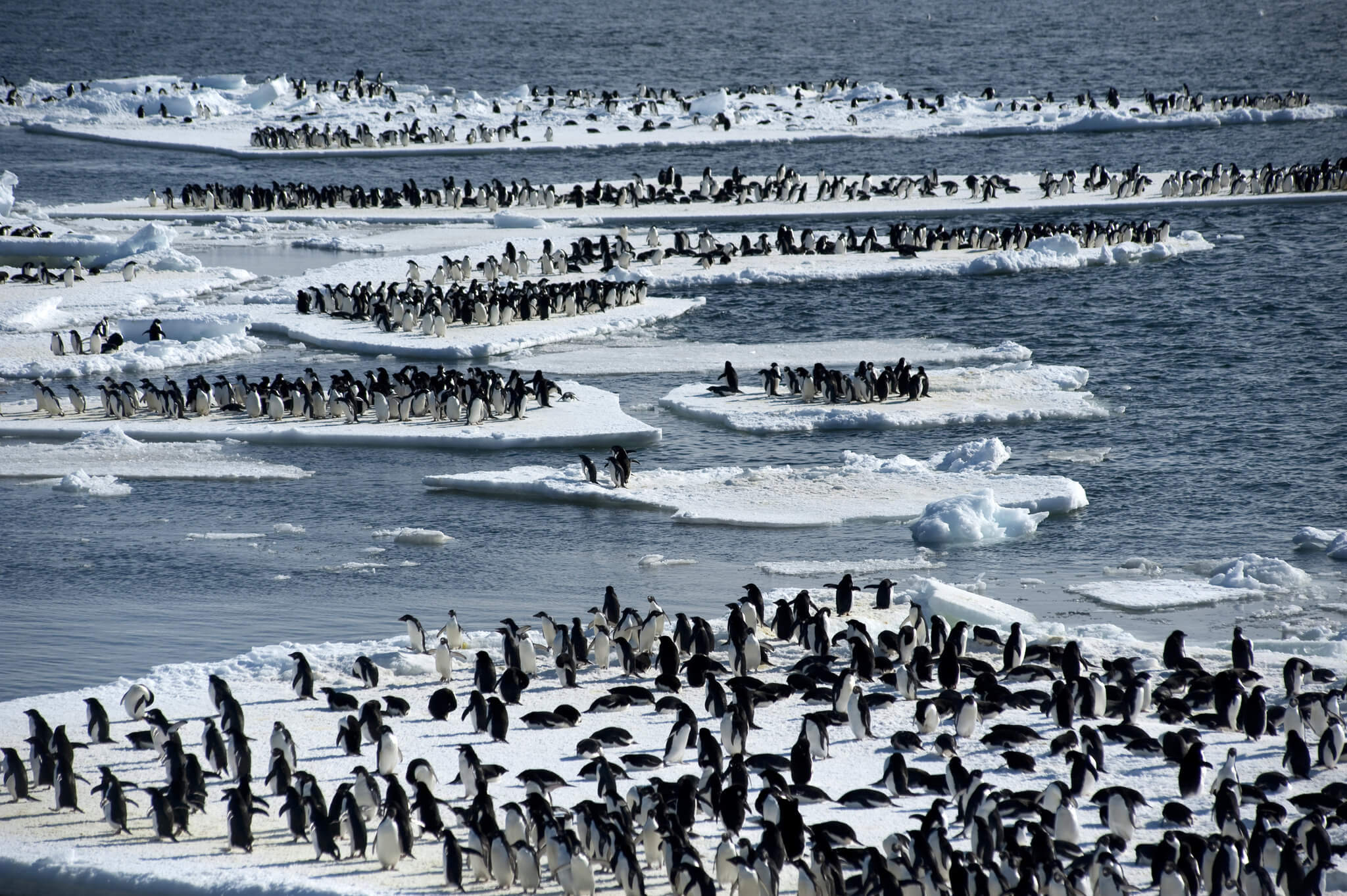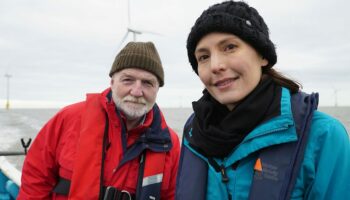description:
Blue Planet II is a 2017 British nature documentary series produced by the BBC Natural History Unit. Like its predecessor, The Blue Planet (2001), it is narrated and presented by naturalist Sir David Attenborough, while the main music score was composed by Hans Zimmer.
episodes:
In recent years, our knowledge of life beneath the waves has been transformed. Using cutting-edge technology, One Ocean takes us on a journey from the intense heat of the tropics to our planet’s frozen poles to reveal new worlds and extraordinary never-before-seen animal behaviours.
Starting in the tropical coral reefs – the most diverse ocean habitat – a baby dolphin is taught the secrets of a coral reef, as its family rubs against a particular gorgonian which may have medicinal properties. On another reef, a tusk fish demonstrates a surprising level of ingenuity – tool use – as it uses corals as an anvil to break open clams. In the Seychelles, half a million terns nest on an island. Fledglings must eventually take to the wing, but danger lurks beneath the waves – metre-long giant trevally fish leap clear out of the water to snatch the birds.
The tropical oceans drive our planet’s weather. Sun heats the sea, creating rain, winds and huge storms that drive up towards higher latitudes. Here, unlike the tropics, the seas change with the seasons. In spring thousands of mobula rays gather in Mexico’s Sea of Cortez. At night, in a previously unseen event, tiny organisms that light up when disturbed react to their wingbeats, creating an enchanting bioluminescent firework display.
Phytoplankton produce as much oxygen as all the plants on land and lie at the base of marine food chains everywhere. Where the plankton thrive, fish thrive too, and ocean travellers will migrate thousands of miles to take advantage of these productive seas. Predatory false killer whales off the coast of New Zealand are in search of dolphins. But when they find them, the whales team up with the dolphins to form super-pods – a formidable army to take advantage of the bounty of these seasonal seas.
In temperate seas around the globe, spring brings greening oceans. In Japan, a kelp-covered shipwreck is home to the Asian sheepshead wrasse, or Kobudai. At the start of summer a male mates with the females. But when a female reaches both a critical body size and age, it can undergo an extraordinary metamorphosis. Females change gender, and a new male challenges an older male to a face-off.
Toward our planet’s poles, the ocean’s surface is locked in ice. But in the Arctic, a warm current from the south keeps some Norwegian fjords ice-free all year round. Here, in winter, pods of orcas use dramatic tail slaps to stun herring, and humpback whales follow the noises to find the feast.
Ocean currents move heat around our planet and maintain a climate favourable for life. But our ocean system, in relative equilibrium for millennia, is changing at a worrying rate. Deep in the polar north, we meet walrus mothers and their newborn calves, searching for an ice floe to rest on. But with rising temperatures, summer sea ice is retreating – their battles to survive are becoming ever harder. As we begin to understand the true complexity of the lives of our ocean creatures, so do we recognise the fragility of their home.
The deep is perhaps the most hostile environment on earth, at least to us – a world of crushing pressure, brutal cold and utter darkness. We have barely begun to explore it, and yet it is the largest living space on the planet. Scientists already think that there is more life in the deep than anywhere else on earth.
This episode takes us on an epic journey into the unknown, a realm that feels almost like science fiction. We discover alien worlds, bizarre creatures and extraordinary new behaviours never seen before. We encounter savage hordes of Humboldt squid hunting lanternfish in the depths and coral gardens flourishing in absolute darkness, with more species of coral to be found in the deep than on shallow tropical reefs.
On the desert wastes of the abyss, a whale carcass generates a frenzy as slow-moving sharks as big as great whites fight for what may be their first meal in a year. Food is hard to come by and finding a mate is even harder, but life adapts in ingenious ways. There are fish that walk instead of swim, worms that feed exclusively on bones and shrimps that spend almost their entire lives imprisoned with their mate in a cage of crystal sponge.
The deeper you go, the more extreme conditions become. The sheer weight of water above creates almost unendurable pressures. Yet even eight kilometres down, where the basic chemistry of life was once thought impossible, we find strange species swimming through the darkness. From here we journey on down to the deepest place on earth – the Mariana Trench – almost 11 kilometres from the surface, a vast chasm that ruptures the deep sea floor. Only three human beings have ever reached here, and yet there is still life to be found in these deep sea trenches.
The deep can be a violent place. Tectonic plates rip apart or collide in mighty clashes. And at these volcanic hotspots, extraordinary micro-worlds blossom into life, completely divorced from the energy of the sun. Hair-covered crabs feed on gushing plumes of otherwise toxic hydrogen sulphide. Shrimps hover on the fringes of billowing clouds of volcanic chemicals, so hot they could melt lead. We discover new species every time we visit these strange new worlds.
One of these geysers might even hold the secret to all life on earth. At a hydrothermal vent system in the middle of the Atlantic, seawater and rock react under extreme pressures and temperatures to produce complex hydrocarbons – the building blocks of life itself. Scientists have named this strange place the Lost City, and many believe that it was at a place just like this that life on earth first began, four billion years ago.
Corals build themselves homes of limestone in the warm, clear, shallow seas of the tropics. Their reefs occupy less than one tenth of one per cent of the ocean floor, yet they are home to a quarter of all known marine species. They are complex, infinitely varied structures providing all kinds of homes for their many residents. There is fierce rivalry for space, for food and for a partner, but the reef is also a place full of opportunity. For those that manage to establish themselves, there can be great rewards.
The broadclub cuttlefish has found its place by using a hypnotic display that apparently mesmerises its prey, causing it to let down its defences. On the Great Barrier Reef a remarkable grouper uses sign language, dubbed the headstand signal, to reach out to an entirely different creature, a reef octopus, to flush small fish out of their hiding holes and into the groupers waiting mouth.
While they might appear to be nothing more than rocky substrate, each coral is in fact made up of hundreds to thousands of tiny, living coral creatures called polyps. Filmed with super macro time-lapse, we bring them to life and reveal their hidden worlds. As these polyps grow and die they lay the limestone foundation for civilisations and superstructures so large that they can be seen from space.
Coral reef cities never sleep, they are constantly noisy worlds where a chorus of submarine song rings out from their many inhabitants. At dawn, one of the reef’s most charismatic inhabitants, the green turtle, heads off to be cleaned at a special health spa. As she approaches the station, she is joined by more of her fellow turtles and is pushed out by the queue-jumping males. She must wait for her opportunity to sneak back in.
Some animals come to reefs for rest and relaxation. In the desert sands of Egypt, coral reefs thrive in the shallows of the Red Sea, providing bottlenose dolphins with a place to rest. For the youngsters, the reef is their playground. These dolphins play by balancing corals and sponges on their nose and in doing so build important life skills.
Every reef has a sharply defined boundary. On the outer side, facing the open ocean, is the drop-off. These ramparts protect the city from the ocean waves, but twice a day the walls are covered by the incoming tide. In the Bahamas, the rush of the water creates a truly strange phenomenon – a whirlpool. In the Maldives, on the biggest tides, one particular coral lagoon becomes so flooded with plankton that it attracts hundreds of manta rays.
On the sheltered side of the reef there are sand flats which provide rich feeding grounds. However, away from the protective structures of the reef there is nowhere to hide. This makes it a dangerous place, especially at night when predators patrol in search of prey caught in the open. The bobbit, a giant carnivorous worm, buries deep in the sand in order to ambush unsuspecting prey. But there is safe accommodation for some out here in these sandy suburbs. An extraordinary species of clownfish has made a home in an anemone away from the reef. But it is up to the big male to find a way for the female to lay her eggs.
Reef creatures go to great lengths to give their young a head start in life and nowhere more so than on the remotest reefs in the world. In French Polynesia, thousands of grouper risk death when faced with hundreds of grey reef sharks in order to reproduce.
Despite their longevity and resilience, increasing ocean temperatures have put coral reefs under unprecedented pressure. The most devastating bleaching event known in recorded history wreaks havoc on the Great Barrier Reef in Australia. Without the three-dimensional structure of a coral reef, all reef dwellers are affected. The programme unfolds with one of the greatest mass-spawning events in the oceans – corals, fish and invertebrates all releasing a snowstorm of eggs. By sending their young away from the reef, there is hope that they will regenerate new reefs and secure their future for generations to come.
The big blue is the world’s greatest wilderness, far from shore and many kilometres deep. It’s a vast marine desert where there is little to eat and nowhere to hide. Yet it’s home to some of the biggest and most spectacular creatures on earth.
This episode reveals what it takes to survive in this savage and forbidding world. We witness feats of incredible endurance, moments of high drama and extraordinary acts of heart-wrenching self-sacrifice.
Every animal in the big blue must find their own unique way to survive. Sperm whales have the largest brains in the world. They live for 80 years, and we are only now beginning to learn the extraordinary complexity of their language of clicks – thought to coordinate the whole family in everything from childcare to hunting. With special pressure-proof cameras, we witness record-breaking feats of endurance as they hunt for squid a kilometre down into the abyss.
Many smaller creatures find sanctuary in this great wilderness. Only recently have we begun to solve the mystery of where baby turtles disappear to in their early years. They leave the crowded waters of the coast and head to the open ocean, where they use floating debris like logs as life rafts. Here they remain until adulthood, adrift on the high seas in relative safety away from coastal predators.
Over half of all animals in the open ocean drift in currents. Jellyfish cross entire oceans feeding on whatever happens to tangle with their tentacles. The jelly-like Portuguese man-of-war can harness sail power to fish with its deadly tentacles. Sometimes there is a brief explosion of food in this marine desert, but ocean hunters must be fast to make the best of this bonanza. We witness super pods of up to 5,000 spinner dolphins racing to herd vast shoals of lanternfish, briefly caught at the surface where it is thought they spawn. New aerial footage reveals, for the first time, the truth to a centuries-old sailors’ legend of the ‘boiling seas’ – the spectacular feeding frenzy of 90kg tuna and dolphins smashing through the lantern fish shoals turning the sea white with foam.
Raising your young in this great wilderness is a huge challenge. The episode follows two very different ocean voyagers that show amazing care. We get closer to solving the mystery of where the biggest fish in the sea, the whale shark, gives birth. The pregnant females make an epic journey across the Pacific to the Galapagos Islands. Scientists now think it might be here that the pregnant females give birth to their pups in the safety of the depths. And in the freezing south Atlantic, a pair of ageing wandering albatrosses give their all to raise their very last chick.
Yet even in the big blue, thousands of kilometres from land, there is evidence of human activity. An estimated eight million tons of plastic is dumped into the oceans every year. Globe-spanning currents carry it into the heart of every ocean, often with tragic consequences. In the Atlantic waters off Europe we follow a family of pilot whales whose calf has recently died. One possible cause of death is poisoning by its own mother’s contaminated milk. As plastic breaks down it combines with other pollutants that are consumed by vast numbers of marine creatures. In top predators like pilot whales, the toxic chemicals can build up to lethal levels.
It’s our green seas, not the blue, that bring life to our oceans. Here sunlight powers the growth of enchanted forests of kelp, mangroves and prairies of sea grass. They are the most abundant but fiercely competitive places in the ocean to live.
The most bountiful kelp forests are found off the tip of southern Africa, where two great oceans collide. Almost a hundred different species of shark patrol these waters, driving one resident – the common octopus – to become the ultimate escape artist. To outwit her nemesis, the pyjama shark, she uses ingenious tactics, never filmed before.
Along the Pacific coast of North America stand, at 60 metres high, the largest and perhaps most diverse kelp forests in the world. In clearings, bright orange male Garibaldi fish guard territories of short turf seaweed. When spiny urchins invade and graze their crops, the Garibaldi desperately pick them off. But urchins can swarm in vast numbers and even attack and fell the kelp forest itself, creating vast ‘urchin barrens’. All is not entirely lost, thanks to the return of a ravenous forest resident – sea otters. Back in the late 1800s, sea otters were hunted for their thick pelts to near extinction. And with them gone, urchin numbers rose, destroying many forests. Today, thanks to protection, sea otter numbers are recovering, along with the health of the forest. In a filming first, we reveal great rafts of sea otters now numbering in their hundreds.
In warmer waters another green sea takes hold. Off Western Australia, vast prairies of seagrass extend to the horizon. Here, grazing green turtles are stalked by tiger sharks. By keeping turtles on the move, tiger sharks prevent the seagrass meadows from being overgrazed. In this way, sharks have become surprising allies in the fight against climate change – as a patch of sea grass is 35 times more efficient at absorbing and storing carbon than the same area of rainforest.
Once a year, one sea meadow in Australia is overrun by an extraordinary invasion. With the first full moon of winter, strange creatures emerge from the deep – spider crabs. The army marches into the shallows and starts to pile one on top of each other, building mounds over a metre high. They then moult. Soft-bodied and weakened, they must avoid the patrolling four-metre-long stingrays.
Further along the coast, the greatest gathering of cuttlefish in the world takes place, as males battle it out for the right to mate. But even among these giant cuttlefish, the largest of their kind, it’s not always size that counts. A smaller, sneaky male uses subterfuge, even pretending to be a female, to confuse rivals and get his girl. Even raising your young can be tough in such a competitive place. A weedy seadragon sets out on an epic quest to give his young the very best start in life.
Vast numbers of the ocean’s baby fish start their lives in the green seas. The richest nurseries of all are the mangrove forests. Straddling the boundary between land and sea, they provide shelter for the juvenile fish. But in the mangroves of Western Australia lives a deadly assassin – the 40cm-long zebra mantis shrimp. In a surprising story of betrayal, a male shrimp will abandon his mate of possibly 20 years, trading up for a larger female.
And there is one other green sea that supports more life than all the rest combined. Unlike the mangrove forests and prairies of sea grass, its existence in the open seas is only temporary. Microscopic algae flourish into vast blooms, providing a feast for plankton-feeding fish like billions of anchovies. In Monterey Bay, California, the giant shoals draw in thousands of dolphins, sea lions and humpback whales who all race to claim their share of the feast.
On the coast, two worlds collide. Coasts are the most dynamic and challenging habitats in the ocean – that brings great rewards but also great danger. The extraordinary animals that live here must find ingenious ways to cope with two very different worlds.
This episode is a rollercoaster ride of heart-stopping action and epic drama, peopled with characters from the beautiful to the bizarre. We meet fish that live on dry land and puffins that must travel 60 miles or more for a single meal, and witness a life-and-death struggle in a technicolour rock pool.
In a secluded cove in the Galapagos, sea lions feast on 60kg tuna. It should be impossible – tuna are usually far too fast for sea lions to catch. But here the sea lions club together to herd their prey inshore. Once trapped in the shallows, these huge fish are easy pickings.
As the tide recedes in Brazil, lightfoot crabs leap from rock to rock, desperately avoiding the water – their lives depend on it. Moray eels launch themselves from rock pools, jaw gaping. Then octopuses, too. Both crawl across dry rock to set their ambush. Elsewhere, the ever-changing tides create rock pools. But these temporary worlds are a battleground. Predatory starfish turn a magical garden into the stuff of nightmares.
All around the world, immense waves pound the shore, and this episode reveals some of the largest on the planet, over 30 metres high. Over millennia these forces carve exquisite coastal sculptures and cliffs that are home to huge colonies of seabirds. Puffins fly up to 30 miles out to sea to find food for their chicks. A father returns with one precious beakful of food… then pirates attack. Desperate dads must escape the faster and more aerobatic skuas before finally delivering a meal to their young puffling.
Meanwhile, in the remote Pacific islands lives the most terrestrial fish on the planet. It lives in miniature caves above the tide lines and uses its tail like a coiled spring to jump from rock to rock. A male tries to attract a mate, but waves are a constant hindrance. These are fish that seem to hate water!
Once a year, king penguins return to the cold Antarctic shores of South Georgia for a month-long moult. First they must cross the biggest wall of blubber on the planet – thousands of gigantic elephant seals. Then they face a month with no food, before they can return to their natural home, the chilly Antarctic seas.
The planet’s coasts are changing fast as they are among the most built-up areas of the world. Just off the beaches of Miami, the largest gathering of coastal sharks on the planet can still be found. But today they must face the many challenges that come from our world too.
While making Blue Planet II, we have explored parts of the ocean that nobody has been to before, encountered extraordinary animals and discovered new insights into how life thrives beneath the waves. But we have also witnessed the profound effects of human activity. The oceans are changing faster and in more ways than at any point in human history and now, for the first time, we understand why.
In this final episode, we uncover the impact that our modern lives are having on our best-loved characters from across the series, including devoted albatross parents unwittingly feeding their chicks discarded plastic and mother dolphins potentially exposing their newborn calves to pollutants through their contaminated milk. Scientists have even discovered that increasing noise levels may stop baby clownfish finding their way home.
Many creatures are struggling to survive in today’s oceans, and some changes in the ocean will require a global effort. While filming the stunning corals on the Great Barrier Reef’s remote Lizard Island, the film crew witnessed a catastrophe. Warmer than normal seas caused the biggest coral bleaching event in human history, killing about 90 per cent of the branching corals at Lizard Island.
But the warming ocean could have an even more devastating effect. We travel to Antarctica on a unique expedition to discover how melting polar ice sheets could one day impact the lives of hundreds of millions of people around the world.
Yet, despite these devastating impacts, there is hope. Every year, billions of herring overwinter in the icy seas off Norway, but just 50 years ago they were almost wiped out by overfishing. Today, thanks to careful regulation, they have returned, creating one of the greatest spectacles in the ocean. Hundreds of giant humpback whales and one of the greatest gatherings of orcas on the planet feast on the herring – an extraordinary story of recovery.
Around the world, individuals are also making a huge difference to the future of the ocean. In the Galapagos, one scientist has devoted much of his life to saving the largest fish in the sea – the whale shark. He is using the latest technology to unlock one of the ocean’s biggest mysteries – where these elusive giants may give birth.
In the Caribbean, a community is reversing the fortune of giant leatherback turtles. Their numbers have dropped dramatically, by up to 90 per cent in some parts of the world, but here, volunteers are risking their lives to get turtle poachers to put down their weapons and instead protect the beach where these magnificent creatures nest. Through these valiant efforts, theirs is now one of the densest leatherback nesting beaches in the world.

